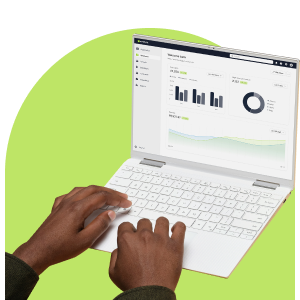Email marketing helps you stay top-of-mind with your existing customers without being pushy. It builds trust over time and improves customer relationships by providing helpful content. Here, we share some tips you might not be using to full effect in your email marketing (yet)! Applying them will boost your email marketing efforts and help you avoid the dreaded spam folder.
1. Create Compelling Campaigns
Let’s begin with the cornerstone of email marketing – creating compelling campaigns. To ensure your campaigns are effective, fully utilise the four types of primary marketing emails available in your email marketing strategy.
These are:
- Promotional Emails – used to advertise your products or services, often by promoting sales or discounts, seasonal events, and company events
- Product Update Emails – meant to inform clients about new or updated products
- Digital Newsletters – sent out at regular intervals to inform clients of company or industry updates by providing engaging articles or relevant news
- Transactional Emails – triggered to be sent when a client takes a specific action, like resetting their password
When writing your email content, keep your brand top-of-mind and use it in line with your company’s corporate identity guidelines. A recipient should be able to identify your brand at a glance. This ensures congruency in your brand strategy and increases familiarity with your audience, building on that trust relationship!
2. Use Automation Where It Makes Sense
Automation is a game-changer in email marketing and allows you to send the right message to the right person at the right time, with minimal manual intervention. Email automation can be especially valuable when implementing drip or nurture campaigns.
Both drip and nurture campaigns incorporate a series of automated email messages recipients receive when they take a specific action, like downloading gated content or signing up for a webinar. These campaigns are designed to nurture your readers toward a buying decision and can be as simple or complex as you want. They enable you to automatically deliver personalised messages and highly relevant content to your audience.
You can easily set up your automation by setting triggers and wait times. Keep in mind, however, that there is a fine line between providing helpful content and overwhelming your reader. Space out your follow-up emails and limit the emails you send in an automation sequence. If you don’t, unsubscribe numbers might rise. Or you can get marked as spam – exactly where you don’t want to be!
Are you sending content your recipients want to receive? This is an important consideration to prevent recipients from marking your content as spam. In this blog post, we show you three types of metrics you need to measure the performance of your bulk email campaigns quickly and effectively.
3. Manage Your Database Diligently
The backbone of effective email marketing is a well-maintained database. Regularly updating your subscriber list ensures accuracy and relevance. Keeping your database updated also ensures that you do not send emails to subscribers who have opted out or unsubscribed. This, in turn, secures compliance with data protection laws, like the Protection of Personal Information Act (POPIA), and maintains a trust relationship between you and your clients.
4. Create Eye-Catching and Functional Content
When creating content in email format, keep in mind that your client wants a product that is visually pleasing and easy to read. You can do this by creating a visual hierarchy using headings, sub-headings, bold text, and short, skimmable paragraphs.
It’s also a good idea to let your content breathe and give your reader’s eyes a rest by adding white space around your text and visual elements. This has the added benefit of a professional, clean email design.
Include links in your email by choosing a theme for your message and promoting related content. This works well when you have a lot of content to share, as you can link to articles, blog posts, videos, or downloadable guides with more in-depth information on a specific subject. It is also beneficial in a multi-channel approach and can direct traffic from your reader’s inbox to the channel of your choice. Keep this strategy in mind when you want to increase the number of visits to a specific channel.
The potency of your subject line will have a direct influence on your open rates. It’s the first copy your reader will see and must be compelling enough to convince them to read more. Keep it short, however, as you have a limited number of characters to grab your reader’s attention!
Similarly, your preview text typically appears as a sneak peek of what to expect from your email. As a best practice, your preview text shouldn’t repeat your subject line. It is prime real estate for your email and should be used to spark curiosity or for an immediate call to action (CTA). The subject line and preview text should complement each other and work together to entice your readers to open your email.
When deciding on image density and using image-based emails, keep your clients in mind. Images are visually appealing but useless if automatically blocked or not downloadable because of a weak internet connection. A simple, text-based email with links to content or products might work best, depending on your audience. Use visuals and images judiciously to make email content more exciting and help break up chunks of text. Ensure that visuals and images are fast loading and use alt text for your images if they don’t load properly.
Dynamic content helps you to personalise the customer experience and keep your readers interested and engaged without adding to your team’s workload. Through dynamic content, you can use client data to curate the content you share with your audience by selecting the relevant content and matching it with the appropriate recipient. Your readers will now only see the content that is relevant and helpful to them.
Include a clear call to action (CTA) in your email. A reader should understand what you want them to do almost immediately, whether visiting a web page, calling a number, submitting a form, or reading your latest blog post.
5. Test What Works Before Sending
In the realm of email marketing, A/B testing is your best friend. A/B testing lets you test two different email versions by sending each to a small percentage of your audience. The results will show you which version performed better, and you can send that version to the rest of your email list.
Testing different elements of your emails helps you learn more about your readers – what they prefer, what sparks their curiosity, and what motivates them to interact with you.
Need help learning how to start A/B testing? Begin by testing two different headlines and tracking the most successful one through open rates. You can now see the type of heading your readers respond to more. You can also test different design layouts and see what works best. For more info, this blog details the basics of A/B testing.
6. Make Data-Driven Decisions
Data reports offer a detailed analysis of email performance data. Tracking different metrics can help you establish what content or information performs well or pinpoint possible areas of improvement within your email marketing strategy. If you are unsure what to track, start with basic metrics like open and click-through rates.
The data reports you have access to will depend on the email marketing software you use and what plan you are on. Use the reports you have access to and align that with your strategy to keep from developing data fatigue.
7. Combine Your Email Marketing with Other Channels
Integrate your marketing efforts with other channels like social media, blogs, and LinkedIn articles by cross-sharing content. Your email marketing efforts can drive more traffic to your website and potentially get more email subscribers. Alternatively, you can use links in your emails to drive your audience to your other channels and deliver a seamless brand experience for your clients.
Use a Blend of Elements to Get the Best Results
Elevating your email marketing requires a blend of creativity, strategy, and decision-making informed by data. You can significantly boost your email marketing strategy by focusing on the tips mentioned here. Use what makes sense in your business and watch your email marketing take flight!
Digital Marketing Software Solutions for the Savvy Digital Marketer
Looking for an email marketing software solution to integrate our tips into your email marketing strategy? With Everlytic, you can build emails with an easy drag-and-drop builder, manage your database, do A/B testing, get reports to track your data, and so much more!



